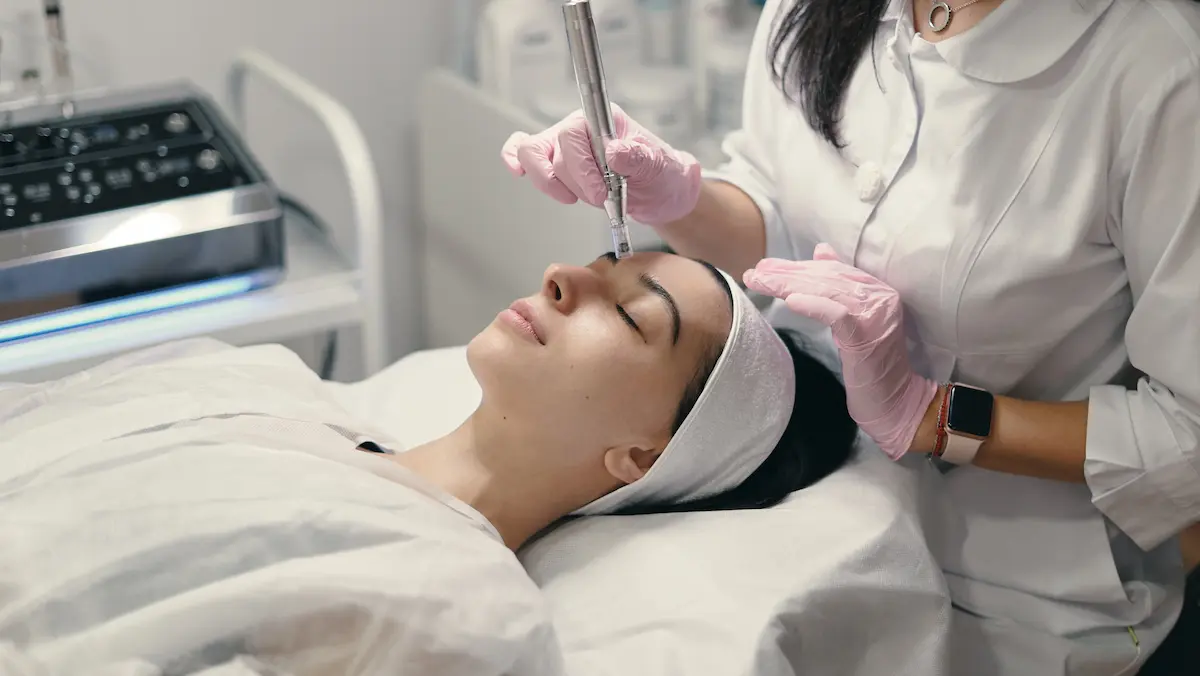- +91 98405 61146
- 82A, S Block 17th St, Anna Nagar, Chennai - 600040
- Mon - Sat: 10 am - 7 pm
- Sun: Closed
Menu
Hair transplantation is typically performed under local anesthesia, which numbs the scalp and minimizes discomfort during the procedure. After the procedure, patients may experience some soreness, swelling, and redness in the scalp area, but these symptoms usually subside within a few days.
Hair transplantation results can last a lifetime if the procedure is performed by an experienced surgeon and the patient follows proper postoperative care instructions. However, the natural aging process and other factors can affect the appearance of the transplanted hair over time.
Recovery time can vary depending on the individual and the method used for hair transplantation. Most people are able to return to work within a few days to a week after the procedure. The transplanted hair will fall out within the first few weeks but will start to grow back within a few months.
Hair transplantation is considered a safe procedure when performed by a qualified and experienced professional. However, as with any surgical procedure, there are certain risks and potential complications associated with hair transplantation. It is important to have a thorough understanding of these risks before deciding to undergo the procedure.
Infection: There is a risk of infection at the site of the transplant, although this is rare.
Bleeding: Like any surgical procedure, there may be some bleeding during or after the transplant. This can usually be controlled by the surgeon.
Scarring: Hair transplantation involves the removal of hair follicles from one area of the body (typically the back of the scalp) and transplanting them to another area. This can result in small scars at both the donor and recipient sites. However, skilled surgeons can minimize scarring through advanced techniques.
Poor aesthetic outcome: The success of a hair transplant depends on numerous factors, including the surgeon’s skill, the quality of the donor hair, and the recipient site’s suitability. In some cases, the transplanted hair may not grow as expected, resulting in an unsatisfactory aesthetic outcome.
Numbness or lack of sensation: Some individuals may experience temporary or permanent numbness or lack of sensation at the transplant sites. This is usually a rare occurrence and may resolve over time.
Hair follicle damage: During the transplantation process, there is a small risk of damage to the hair follicles, which could affect their viability and growth.
It is essential to choose a reputable and experienced hair transplant surgeon who will assess your suitability for the procedure, discuss the potential risks, and develop an appropriate treatment plan. They will also provide detailed post-operative care instructions to promote healing and minimize the chances of complications.
Remember that individual experiences may vary, and it is always recommended to consult with a medical professional to discuss your specific case and address any concerns you may have.
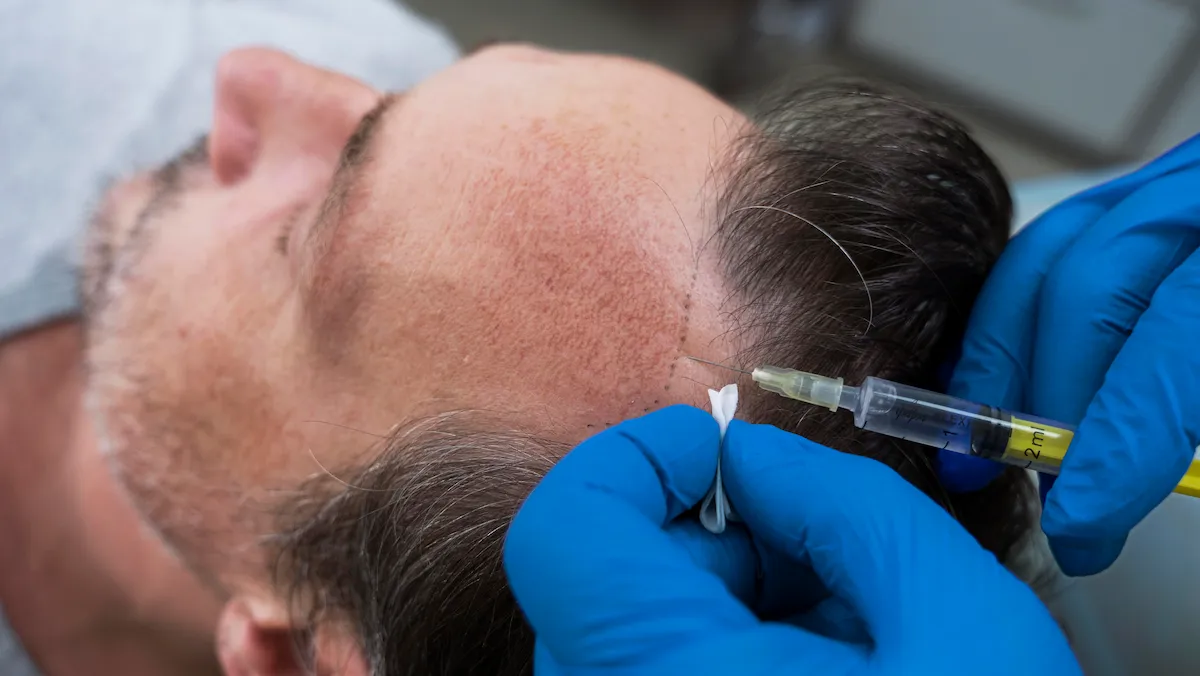
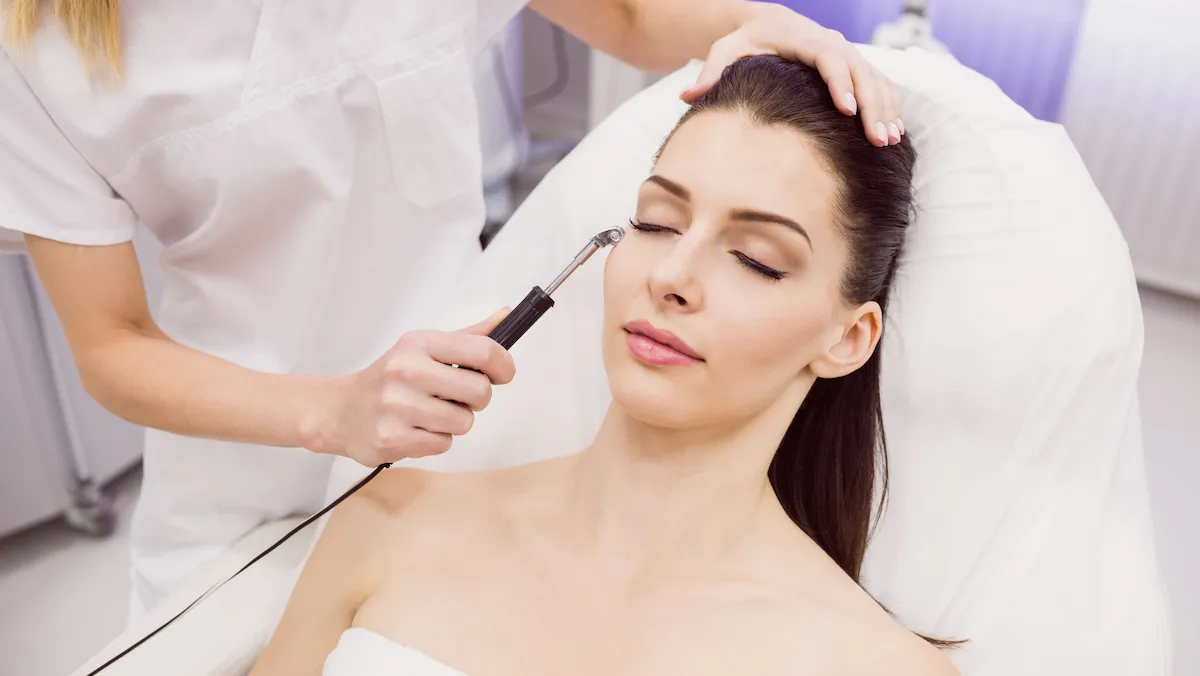
Laser hair reduction can cause some discomfort or pain during the treatment, but it varies from person to person and depends on several factors such as the individual’s pain tolerance, the area being treated, the intensity of the laser, and the type of laser used.
Most people describe the sensation as a snapping or stinging feeling, similar to the snap of a rubber band against the skin. However, many laser hair reduction procedures now incorporate cooling systems or numbing creams to minimize discomfort and make the treatment more comfortable.
In general, laser hair reduction is considered to be less painful than other hair removal methods such as waxing or epilating, and any discomfort experienced during the treatment is usually temporary and subsides quickly after the procedure is completed. If you are concerned about pain or discomfort during laser hair reduction, it’s best to discuss your concerns with a qualified healthcare professional or aesthetician before undergoing the treatment.
The results of laser hair reduction can vary from person to person and depend on several factors such as the individual’s hair and skin type, the area being treated, and the type of laser used. In general, laser hair reduction can provide long-term reduction in hair growth, but it’s not considered to be a permanent solution.
After a series of laser hair reduction treatments, most people experience a significant reduction in hair growth in the treated area. However, some hair regrowth may occur over time, and periodic maintenance treatments may be necessary to maintain the results.
The duration of the results also depends on the area being treated. Areas such as the face, underarms, and bikini area may require more frequent maintenance treatments than larger areas such as the legs or back.
It’s important to note that laser hair reduction is not effective for everyone, and some people may not experience significant reduction in hair growth. It’s also essential to follow the recommended treatment schedule and maintenance plan recommended by the healthcare professional or aesthetician to achieve the best results.
The recovery time for laser hair reduction is typically very short, with most people able to resume their normal activities immediately following the procedure. However, there are a few things to keep in mind regarding the recovery process:
Redness and Swelling: It is common to experience some redness and swelling in the treated area immediately following the procedure. This should subside within a few hours, but may last up to a day or two in some cases.
Sensitivity: The treated area may be sensitive for a few days after the procedure, so it’s important to avoid sun exposure and other irritants during this time.
Hair shedding: It is normal to experience some hair shedding in the weeks following the procedure as the treated hair follicles are pushed out. This is a sign that the treatment is working.
Overall, most people can expect to fully recover from laser hair reduction within a few days to a week. However, it’s important to follow any aftercare instructions provided by your technician or doctor to ensure a safe and successful recovery.
Laser hair reduction, also known as laser hair removal, is considered a safe procedure when performed by a qualified and experienced professional. It is a popular method for long-term hair reduction and is commonly used to remove or reduce unwanted hair on various parts of the body.
Qualified professionals: It is crucial to have the procedure performed by a trained and licensed professional, such as a dermatologist or a laser technician who has experience in performing laser hair reduction. They should be knowledgeable about the specific laser equipment used and have a good understanding of skin types and hair characteristics to ensure safe and effective treatment.
Potential side effects: While laser hair reduction is safe, there are some potential side effects that may occur. These can include temporary skin irritation, redness, swelling, and in rare cases, blistering or changes in skin pigmentation. However, these side effects are usually mild and transient, resolving on their own within a few days or weeks.
Eye protection: Proper eye protection is crucial during laser hair reduction treatments to prevent damage to the eyes from the laser light. Both the patient and the professional performing the procedure should wear appropriate eye protection, such as goggles or shields, to ensure safety.
Skin sensitivity: Laser hair reduction works by targeting the pigment in the hair follicles. As a result, individuals with darker skin tones or those with certain medical conditions may have an increased risk of complications, such as skin burns or changes in pigmentation. It is important to consult with a professional who can assess your skin type and determine the most suitable treatment parameters for your specific situation.
Multiple sessions: Laser hair reduction typically requires multiple treatment sessions to achieve optimal results. The exact number of sessions needed depends on numerous factors, including the treatment area, hair color and thickness, and individual response. It is essential to follow the recommended treatment schedule and attend all sessions as advised by your provider to maximize effectiveness and minimize potential risks.
Before undergoing laser hair reduction, it is advisable to schedule a consultation with a qualified professional to discuss your medical history, skin type, and expectations. They can assess your suitability for the procedure, address any concerns you may have, and provide personalized recommendations for safe and effective treatment.
During the procedure, the patient is given anesthesia, which will prevent them from feeling any pain during the surgery. After the surgery, patients may experience some discomfort, swelling, and bruising around the nose and eyes, but this can typically be managed with pain medication prescribed by the surgeon.
Most patients report that any pain or discomfort they experience during the recovery period is manageable and typically subsides within a few days to a week after surgery. It’s important to follow your surgeon’s post-operative instructions carefully to ensure a smooth recovery and minimize any discomfort.
The results of rhinoplasty, or nose surgery, can last for many years or even a lifetime. However, the longevity of the results can depend on several factors, including the skill of the surgeon, the extent of the surgery, and how well the patient takes care of their nose after the procedure.
In general, if the surgery is performed by a skilled and experienced surgeon and the patient follows all post-operative instructions, the results of rhinoplasty can be long-lasting. However, if the patient experiences trauma to the nose or undergoes significant changes in weight or aging, it is possible for the results to be affected.
It’s important to keep in mind that while the results of rhinoplasty can be long-lasting, they may not be permanent. Over time, the natural aging process can affect the nose, and some patients may choose to undergo revision rhinoplasty to maintain or enhance their results.
In general, most people will experience some degree of swelling, bruising, and discomfort after the surgery. The initial swelling will usually subside within the first few weeks, but it can take several months for the final results of the procedure to become fully apparent.
During the first week or two after the surgery, you may need to take pain medication and avoid strenuous activity or heavy lifting. Your surgeon will likely recommend that you keep your head elevated and use cold compresses to help reduce swelling.
After the initial recovery period, you may still need to avoid certain activities, such as contact sports, for several weeks or months to allow your nose to fully heal.
Overall, the recovery time for rhinoplasty can vary from person to person, but most people can expect to see significant improvement within a few weeks and a full recovery within a few months. It’s important to follow your surgeon’s instructions carefully and be patient with the healing process to achieve the best possible results.
Rhinoplasty, also known as nose reshaping or nose surgery, can be a safe procedure when performed by a qualified and experienced plastic surgeon. It is a surgical procedure used to alter the size, shape, or proportions of the nose to improve its appearance or correct functional issues.
Qualified surgeon: It is crucial to choose a skilled and board-certified plastic surgeon who specializes in rhinoplasty. The surgeon should have experience performing the procedure and be well-versed in the latest surgical techniques. Researching the surgeon’s credentials, reviewing before-and-after photos of previous patients, and seeking referrals or recommendations can help you find a qualified professional.
Individual factors: Every person’s anatomy and medical history are unique, which can affect the safety and outcome of the procedure. A thorough evaluation by the surgeon is necessary to assess your suitability for rhinoplasty, considering factors such as nasal structure, skin type, overall health, and any pre-existing conditions. This evaluation will help identify potential risks and determine if you are a suitable candidate for the surgery.
Potential risks and complications: As with any surgical procedure, rhinoplasty carries potential risks and complications. These can include bleeding, infection, adverse reactions to anesthesia, scarring, asymmetry, breathing difficulties, numbness, persistent swelling, and dissatisfaction with the aesthetic outcome. While these risks are low, it is important to discuss them with your surgeon during the consultation to have a comprehensive understanding of the procedure.
Recovery and healing: Rhinoplasty typically involves a period of recovery and healing. Following the surgeon’s post-operative instructions, including proper wound care, limiting physical activities, and attending follow-up appointments, is essential to promote healing and minimize the risk of complications. It is important to have realistic expectations about the recovery process, as it may take several weeks to months to see the results.
Communication and expectations: Clear and open communication with your surgeon is key to ensuring a safe and satisfactory outcome. During the consultation, discuss your goals, concerns, and expectations with the surgeon. They can provide a realistic assessment of what can be achieved through rhinoplasty and explain the potential limitations or risks based on your individual circumstances.
It is important to consult with a qualified plastic surgeon who can evaluate your specific case, explain the procedure in detail, and address any questions or concerns you may have. They will guide you through the decision-making process, provide personalized recommendations, and help determine if rhinoplasty is a safe and suitable option for you.
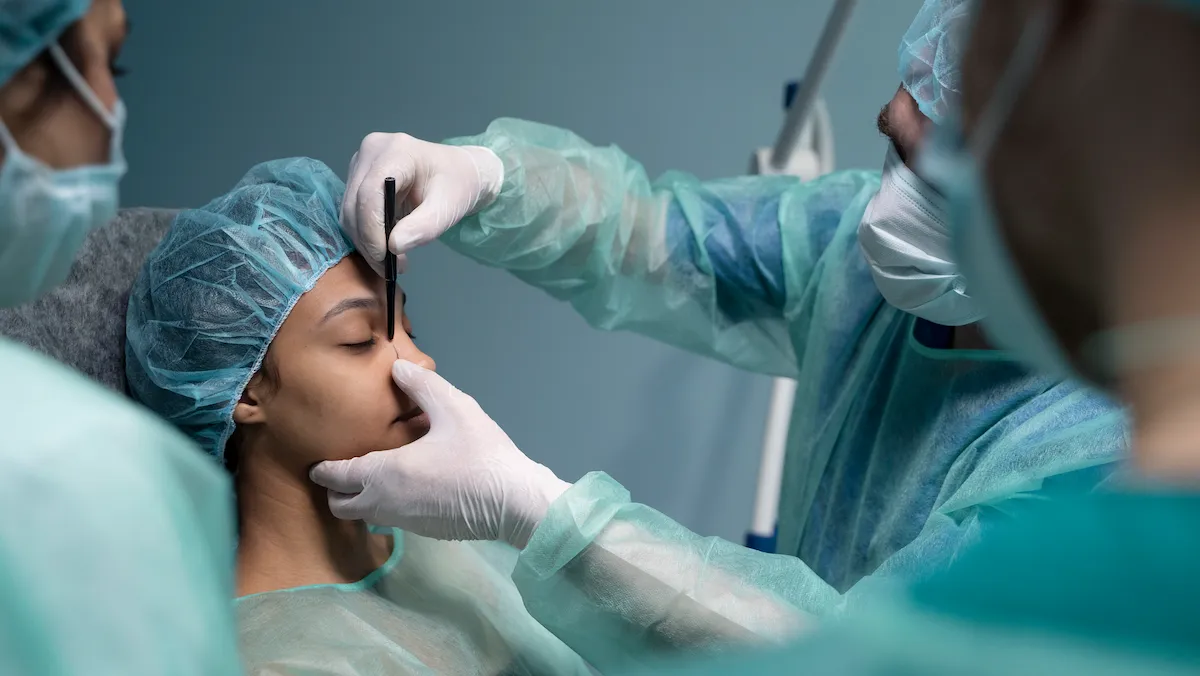
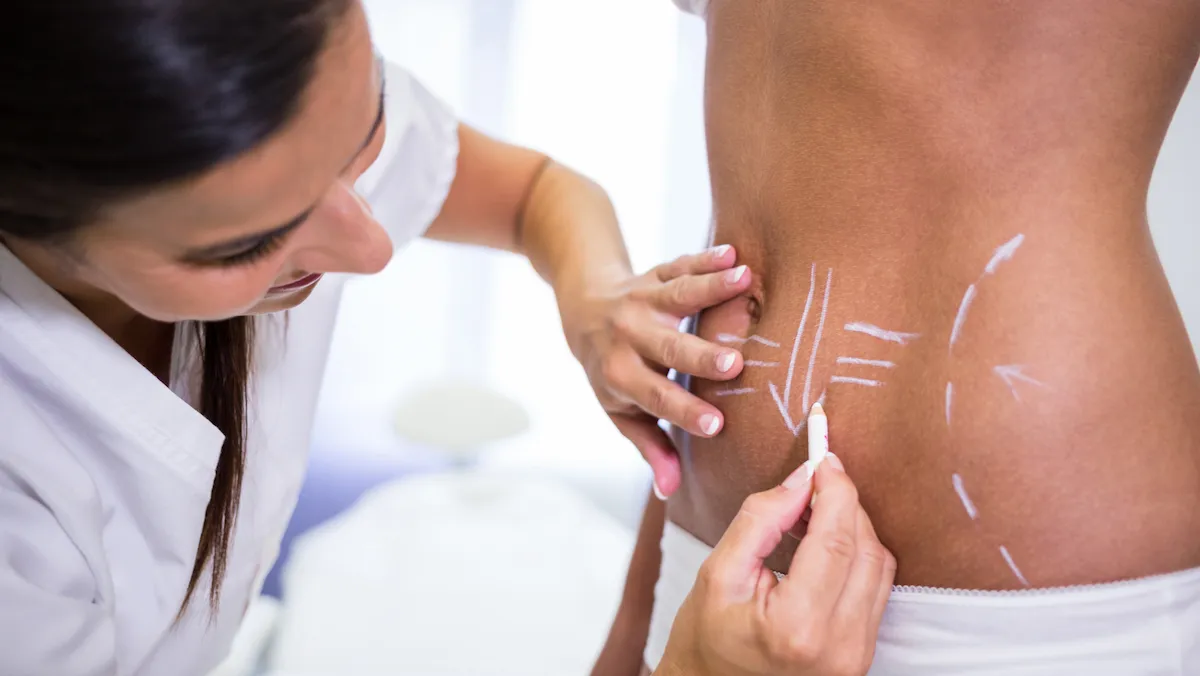
Abdominoplasty, also known as a tummy tuck, is a surgical procedure that involves removing excess skin and fat from the abdominal area and tightening the muscles of the abdominal wall. As with any surgical procedure, there is likely to be some degree of discomfort and pain associated with the recovery process. However, the level of pain and discomfort experienced can vary from person to person, depending on several factors, such as the extent of the surgery, individual pain tolerance, and the surgeon’s technique.
Typically, patients who undergo abdominoplasty can expect to experience some degree of discomfort and pain for the first few days after surgery. This can be managed with pain medications prescribed by the surgeon. The pain and discomfort are often described as feeling similar to intense muscle soreness or bruising.
To manage pain and discomfort, patients are advised to follow their surgeon’s post-operative instructions carefully. These instructions may include taking prescribed pain medications as directed, avoiding strenuous activity, wearing a compression garment, and getting plenty of rest.
Overall, while abdominoplasty can be uncomfortable in the immediate post-operative period, most patients report that the results are worth the temporary discomfort. It is important to discuss any concerns about pain management with your surgeon before undergoing the procedure.
The results of Abdominoplasty, also known as a tummy tuck, can be long-lasting, but they are not necessarily permanent. The longevity of the results depends on several factors, such as the patient’s age, overall health, weight fluctuations, and lifestyle habits.
If the patient maintains a stable weight and healthy lifestyle, the results of an abdominoplasty can last for many years. However, significant weight gain or pregnancy after the procedure can affect the longevity of the results.
It is essential to follow your surgeon’s post-operative instructions, including wearing compression garments and avoiding strenuous activities for a certain period, to promote proper healing and maximize the results.
In summary, while the results of an abdominoplasty can be long-lasting, they are not guaranteed to be permanent, and lifestyle factors can affect the longevity of the outcome.
Abdominoplasty, commonly known as a tummy tuck, is a surgical procedure that involves removing excess skin and fat from the abdominal area and tightening the muscles. Recovery time from an abdominoplasty can vary depending on the extent of the surgery and the individual’s overall health. Generally, it can take several weeks to several months to fully recover from the procedure.
During the first few days after surgery, patients may experience some pain, swelling, and bruising in the abdominal area. Pain medication and proper rest can help manage these symptoms. Patients are advised to avoid strenuous activities and heavy lifting for at least 6 weeks after surgery to allow the body to fully heal.
Most patients are able to return to work and normal activities within 2-4 weeks after surgery, but it is important to follow the post-operative instructions provided by your surgeon to ensure a safe and speedy recovery. Full recovery can take up to 6 months to a year, during which time patients should continue to follow a healthy diet and exercise routine to maintain the results of their abdominoplasty.
Abdominoplasty, commonly known as a tummy tuck, can be a safe procedure when performed by a qualified and experienced plastic surgeon. It is a surgical procedure used to remove excess skin and fat from the abdomen and tighten the underlying muscles to achieve a smoother and firmer abdominal contour.
Qualified surgeon: It is crucial to choose a skilled and board-certified plastic surgeon who specializes in abdominoplasty. The surgeon should have experience performing the procedure and be well-versed in the latest surgical techniques. Researching the surgeon’s credentials, reviewing before-and-after photos of previous patients, and seeking referrals or recommendations can help you find a qualified professional.
Individual factors: Each person’s anatomy, medical history, and overall health are unique, which can affect the safety and outcome of the procedure. A thorough evaluation by the surgeon is necessary to assess your suitability for abdominoplasty. Factors such as your abdominal muscle tone, skin quality, body weight, and any pre-existing medical conditions will be considered. This evaluation will help identify potential risks and determine if you are a suitable candidate for the surgery.
Potential risks and complications: As with any surgical procedure, abdominoplasty carries potential risks and complications. These can include bleeding, infection, adverse reactions to anesthesia, blood clots, poor wound healing, seroma (fluid accumulation), changes in skin sensation, scarring, asymmetry, and dissatisfaction with the aesthetic outcome. While these risks are low, it is important to discuss them with your surgeon during the consultation to have a comprehensive understanding of the procedure.
Recovery and healing: Abdominoplasty involves a period of recovery and healing. Following the surgeon’s post-operative instructions, including proper wound care, limiting physical activities, wearing compression garments, and attending follow-up appointments, is essential to promote healing and minimize the risk of complications. The recovery process can vary depending on the extent of the surgery and individual healing capabilities.
Communication and expectations: Open and clear communication with your surgeon is crucial to ensuring a safe and satisfactory outcome. During the consultation, discuss your goals, concerns, and expectations with the surgeon. They can provide a realistic assessment of what can be achieved through abdominoplasty and explain the potential limitations or risks based on your individual circumstances.
It is important to consult with a qualified plastic surgeon who can evaluate your specific case, explain the procedure in detail, and address any questions or concerns you may have. They will guide you through the decision-making process, provide personalized recommendations, and help determine if abdominoplasty is a safe and suitable option for you.
Liposuction is a surgical procedure that involves the removal of excess fat deposits from the body using a thin, hollow tube called a cannula. During the procedure, the patient is typically given anesthesia to numb the area being treated, which can help to minimize any pain or discomfort.
After the procedure, patients may experience some pain, swelling, and bruising in the treated area, but this can typically be managed with pain medications and other supportive measures. The level of pain experienced can vary depending on a number of factors, including the amount of fat removed, the size and location of the treatment area, and the individual’s pain tolerance.
In general, liposuction is a safe and effective procedure that can produce significant improvements in body contour and overall appearance. However, like any surgical procedure, liposuction does carry some risks, including bleeding, infection, and complications related to anesthesia. It is important to discuss the risks and benefits of liposuction with a qualified plastic surgeon before undergoing the procedure.
The results of liposuction can be long-lasting, but they are not necessarily permanent. The amount of time that the results will last can depend on several factors, including the patient’s lifestyle habits and overall health.
If the patient maintains a healthy diet and exercise routine after the procedure, the results of liposuction can be more likely to last for a longer period of time. However, if the patient gains weight or does not take care of their body, the fat cells in the treated area can expand, potentially diminishing the results of the procedure.
Additionally, as the natural aging process occurs, the skin can lose elasticity, which can cause the treated area to become less firm and smooth over time. This can be more noticeable in areas where large amounts of fat were removed.
It is important for patients to have realistic expectations about the results of liposuction and to work closely with their plastic surgeon to develop a personalized aftercare plan that can help to maximize the longevity of the results. Regular exercise, a healthy diet, and good overall health habits can all help to support the long-term success of the procedure.
The recovery time after liposuction can vary depending on the extent of the procedure and the individual’s overall health. In general, it can take several weeks to several months to fully recover from liposuction. Here are some general guidelines for recovery after liposuction:
Immediately after the procedure, you will need to rest and avoid strenuous activity for a few days.
You may experience some pain, swelling, and bruising in the treated area, which can last for several weeks.
You will need to wear a compression garment for several weeks to help reduce swelling and promote healing.
You should avoid vigorous exercise and other strenuous activities for at least two to four weeks after the procedure.
You should avoid soaking in a bathtub, swimming, or using hot tubs or saunas for at least two to four weeks after the procedure.
Most people can return to work and normal activities within a few days to a week after the procedure, but it is important to follow your surgeon’s specific instructions for your individual case.
Overall, it is important to be patient and allow your body time to heal after liposuction. Your surgeon can give you more specific guidance on what to expect during your recovery period.
Liposuction is considered a safe procedure when performed by a qualified and experienced plastic surgeon. It is a surgical procedure used to remove excess fat deposits from specific areas of the body to improve body contour and proportions.
Qualified surgeon: It is crucial to choose a skilled and board-certified plastic surgeon who specializes in liposuction. The surgeon should have experience performing the procedure and be well-versed in the latest techniques. Researching the surgeon’s credentials, reviewing before-and-after photos of previous patients, and seeking referrals or recommendations can help you find a qualified professional.
Individual factors: Each person’s anatomy, medical history, and overall health are unique, which can affect the safety and outcome of the procedure. A thorough evaluation by the surgeon is necessary to assess your suitability for liposuction. Factors such as your skin elasticity, body weight, and any pre-existing medical conditions will be considered. This evaluation will help identify potential risks and determine if you are a suitable candidate for the surgery.
Potential risks and complications: As with any surgical procedure, liposuction carries potential risks and complications. These can include bleeding, infection, adverse reactions to anesthesia, fluid accumulation, changes in skin sensation, contour irregularities, scarring, and dissatisfaction with the aesthetic outcome. While these risks are low, it is important to discuss them with your surgeon during the consultation to have a comprehensive understanding of the procedure.
Recovery and healing: Liposuction involves a period of recovery and healing. Following the surgeon’s post-operative instructions, including proper wound care, wearing compression garments, limiting physical activities, and attending follow-up appointments, is essential to promote healing and minimize the risk of complications. The recovery process can vary depending on the extent of the surgery and individual healing capabilities.
Communication and expectations: Open and clear communication with your surgeon is crucial to ensuring a safe and satisfactory outcome. During the consultation, discuss your goals, concerns, and expectations with the surgeon. They can provide a realistic assessment of what can be achieved through liposuction and explain the potential limitations or risks based on your individual circumstances.
It is important to consult with a qualified plastic surgeon who can evaluate your specific case, explain the procedure in detail, and address any questions or concerns you may have. They will guide you through the decision-making process, provide personalized recommendations, and help determine if liposuction is a safe and suitable option for you.
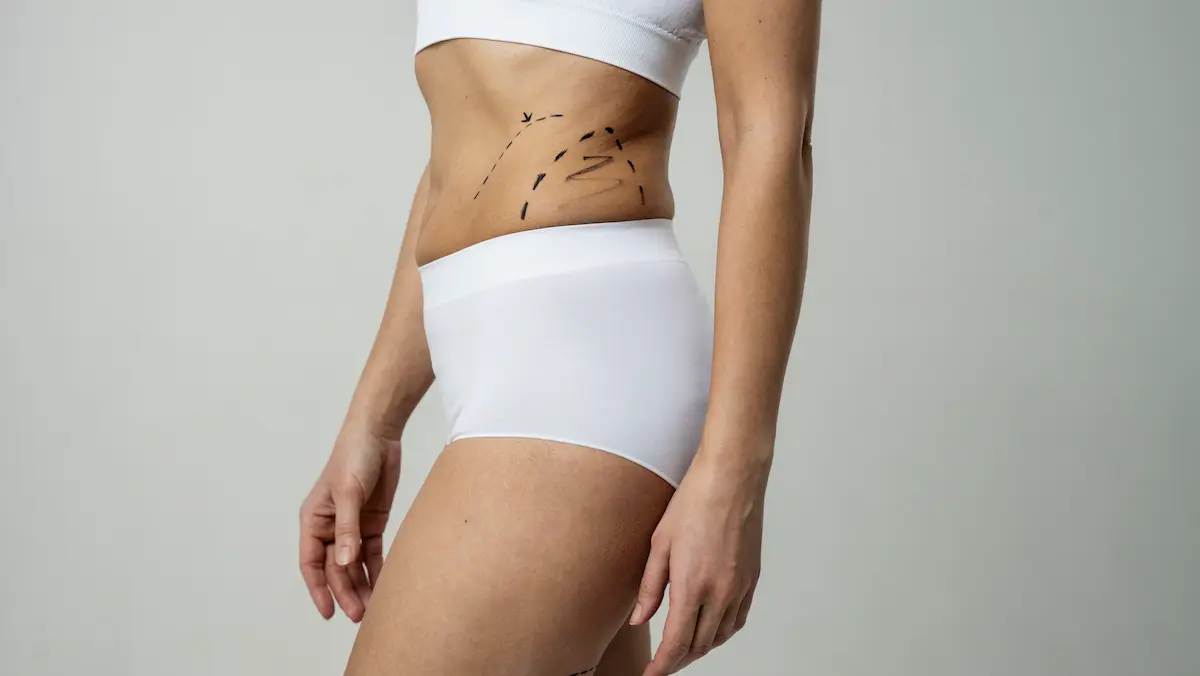

Breast surgery can involve a range of procedures, such as breast augmentation, breast reduction, breast lift, breast reconstruction, and breast biopsy. The level of pain experienced during and after the surgery can vary depending on the type and extent of the procedure, as well as individual factors such as pain tolerance.
In general, breast surgeries involve anesthesia, which can help to minimize pain during the procedure itself. After the surgery, patients may experience some discomfort, swelling, and bruising, which can be managed with pain medication prescribed by the surgeon.
It’s important to note that while breast surgery may involve some pain, it is typically well-managed with appropriate pain relief strategies. The surgeon and medical team will work to ensure that patients are as comfortable as possible during and after the surgery, and will provide guidance on managing pain and discomfort during the recovery period.
The longevity of the results of breast surgery depends on several factors, including the type of procedure performed, the patient’s age and health status, and their lifestyle habits.
Breast augmentation with implants, for example, typically lasts for around 10 to 15 years, although some women may need to have their implants replaced sooner if they experience complications or if the implants rupture. Breast reduction surgery, on the other hand, can provide long-lasting results, although weight fluctuations and pregnancy can affect the outcome.
Breast lift surgery, also known as mastopexy, can provide long-lasting results, but the aging process and changes in weight can affect the outcome over time. The results of breast reconstruction surgery, which is typically performed after a mastectomy, can also be long-lasting, although radiation therapy and other factors can affect the outcome.
It’s important to note that the results of breast surgery are not permanent and may change over time due to factors such as aging, weight changes, hormonal fluctuations, and lifestyle habits. It’s important for patients to maintain a healthy lifestyle and follow their surgeon’s post-operative instructions to help prolong the results of their surgery.
The recovery time for breast surgeries can vary depending on the type of procedure performed and individual healing rates. Generally speaking, breast surgeries can take several weeks to several months to fully recover.
For example, breast augmentation surgery typically requires a recovery time of 1-2 weeks before returning to work, and 4-6 weeks before returning to more strenuous activities such as exercise. On the other hand, breast reduction surgery can require a recovery time of 2-4 weeks before returning to work, and 6-8 weeks before returning to more strenuous activities.
In addition, the extent of the surgery and the individual’s overall health and healing abilities can also affect recovery time. It’s important to follow the post-operative instructions provided by your surgeon and attend all follow-up appointments to ensure proper healing and recovery.
Overall, it’s best to discuss your expected recovery time with your surgeon, as they can provide more specific guidance based on your unique situation.
Breast surgeries, which encompass various procedures such as breast augmentation, breast reduction, and breast lift, can be safe procedures when performed by qualified and experienced plastic surgeons. However, it is important to note that all surgical procedures carry inherent risks and potential complications.
Qualified surgeon: It is crucial to choose a skilled and board-certified plastic surgeon who specializes in breast surgeries. The surgeon should have experience performing the specific procedure you are considering and be well-versed in the latest techniques. Researching the surgeon’s credentials, reviewing before-and-after photos of previous patients, and seeking referrals or recommendations can help you find a qualified professional.
Individual factors: Each person’s anatomy, medical history, and overall health are unique, which can impact the safety and outcome of breast surgeries. A comprehensive evaluation by the surgeon is necessary to assess your suitability for the procedure and identify any potential risks. Factors such as breast shape, size, skin quality, breast symmetry, and any pre-existing medical conditions will be considered.
Potential risks and complications: Like any surgical procedure, breast surgeries carry potential risks and complications. These can include bleeding, infection, adverse reactions to anesthesia, changes in nipple or breast sensation, scarring, asymmetry, implant-related issues (in the case of augmentation), implant rupture or leakage, and dissatisfaction with the aesthetic outcome. It is important to discuss these potential risks with your surgeon during the consultation to fully understand the procedure and make an informed decision.
Recovery and healing: Breast surgeries involve a period of recovery and healing. Following the surgeon’s post-operative instructions, including proper wound care, wearing supportive bras, limiting physical activities, and attending follow-up appointments, is essential for a successful recovery and to minimize the risk of complications. The recovery process can vary depending on the specific procedure performed and individual healing capabilities.
Communication and expectations: Open and honest communication with your surgeon is vital to ensure a safe and satisfactory outcome. During the consultation, discuss your goals, concerns, and expectations with the surgeon. They can provide a realistic assessment of what can be achieved through the procedure and explain the potential limitations or risks based on your individual circumstances.
It is important to consult with a qualified plastic surgeon who can evaluate your specific case, explain the procedure in detail, and address any questions or concerns you may have. They will guide you through the decision-making process, provide personalized recommendations, and help determine if breast surgery is a safe and suitable option for you.
Gynecomastia correction, also known as male breast reduction surgery, can involve some discomfort during the recovery period. However, the amount of pain experienced can vary depending on the individual and the extent of the procedure.
During the surgery, patients are typically given general anesthesia, which means they will not feel any pain during the procedure. After the surgery, patients may experience some discomfort, swelling, and bruising in the chest area, which can last for several days to weeks. Pain medication can be prescribed to help manage any pain or discomfort.
It is important to follow the post-operative care instructions provided by the surgeon to help minimize pain and promote healing. These instructions may include wearing a compression garment, avoiding strenuous activity, and taking prescribed medications as directed.
In summary, while gynecomastia correction can involve some discomfort during the recovery period, pain can be managed with medication and following post-operative care instructions. It is always best to consult with a qualified surgeon to discuss any concerns or questions about the procedure and the recovery process.
The results of Gynecomastia correction or male breast reduction surgery are typically long-lasting, but it is important to understand that the outcome can be affected by factors such as weight gain, aging, and hormonal changes.
The surgery involves the removal of excess breast tissue, fat, and skin from the chest area to create a more masculine contour. If the procedure is successful, the results can be seen immediately, and the chest will appear flatter and firmer.
It is important to note that maintaining a healthy weight and a stable hormone level can help ensure the long-term success of the procedure. Significant weight gain or hormonal imbalances can cause breast tissue to regrow, which can result in the return of gynecomastia.
In general, the results of gynecomastia correction are considered permanent, but it is recommended to maintain a healthy lifestyle and follow-up with the surgeon regularly to monitor any changes in the chest area.
The recovery time for gynecomastia correction, also known as male breast reduction surgery, can vary depending on the extent of the surgery and the individual’s healing abilities. In general, it can take several weeks to several months to fully recover.
After the surgery, patients typically experience some bruising, swelling, and discomfort in the chest area. The surgeon may prescribe pain medication and advise wearing a compression garment to help reduce swelling and support the chest area during the healing process.
Most patients can return to work within a week or two after surgery, but should avoid strenuous exercise and heavy lifting for several weeks. It’s important to follow the post-operative instructions provided by your surgeon, attend all follow-up appointments, and avoid any activities that may interfere with the healing process.
While the initial recovery period may take several weeks, it can take several months for the swelling to fully subside and the final results of the surgery to become visible. It’s important to have realistic expectations and understand that the final results may not be immediately apparent. Your surgeon can provide more specific guidance on expected recovery time based on your unique situation.
Gynecomastia correction, also known as male breast reduction, can be a safe procedure when performed by a qualified and experienced plastic surgeon. It is a surgical procedure used to reduce excess breast tissue in males and restore a more masculine chest contour.
Qualified surgeon: It is crucial to choose a skilled and board-certified plastic surgeon who specializes in gynecomastia correction. The surgeon should have experience performing the procedure and be well-versed in the latest surgical techniques. Researching the surgeon’s credentials, reviewing before-and-after photos of previous patients, and seeking referrals or recommendations can help you find a qualified professional.
Individual factors: Each person’s anatomy, medical history, and overall health are unique, which can affect the safety and outcome of gynecomastia correction. A thorough evaluation by the surgeon is necessary to assess your suitability for the procedure. Factors such as the cause and extent of gynecomastia, breast tissue composition, skin elasticity, and any pre-existing medical conditions will be considered. This evaluation will help identify potential risks and determine if you are a suitable candidate for the surgery.
Potential risks and complications: Like any surgical procedure, gynecomastia correction carries potential risks and complications. These can include bleeding, infection, adverse reactions to anesthesia, changes in nipple or breast sensation, asymmetry, scarring, contour irregularities, and dissatisfaction with the aesthetic outcome. While these risks are low, it is important to discuss them with your surgeon during the consultation to have a comprehensive understanding of the procedure.
Recovery and healing: Gynecomastia correction involves a period of recovery and healing. Following the surgeon’s post-operative instructions, including proper wound care, wearing compression garments, limiting physical activities, and attending follow-up appointments, is essential to promote healing and minimize the risk of complications. The recovery process can vary depending on the extent of the surgery and individual healing capabilities.
Communication and expectations: Open and clear communication with your surgeon is crucial to ensuring a safe and satisfactory outcome. During the consultation, discuss your goals, concerns, and expectations with the surgeon. They can provide a realistic assessment of what can be achieved through gynecomastia correction and explain the potential limitations or risks based on your individual circumstances.
It is important to consult with a qualified plastic surgeon who can evaluate your specific case, explain the procedure in detail, and address any questions or concerns you may have. They will guide you through the decision-making process, provide personalized recommendations, and help determine if gynecomastia correction is a safe and suitable option for you.

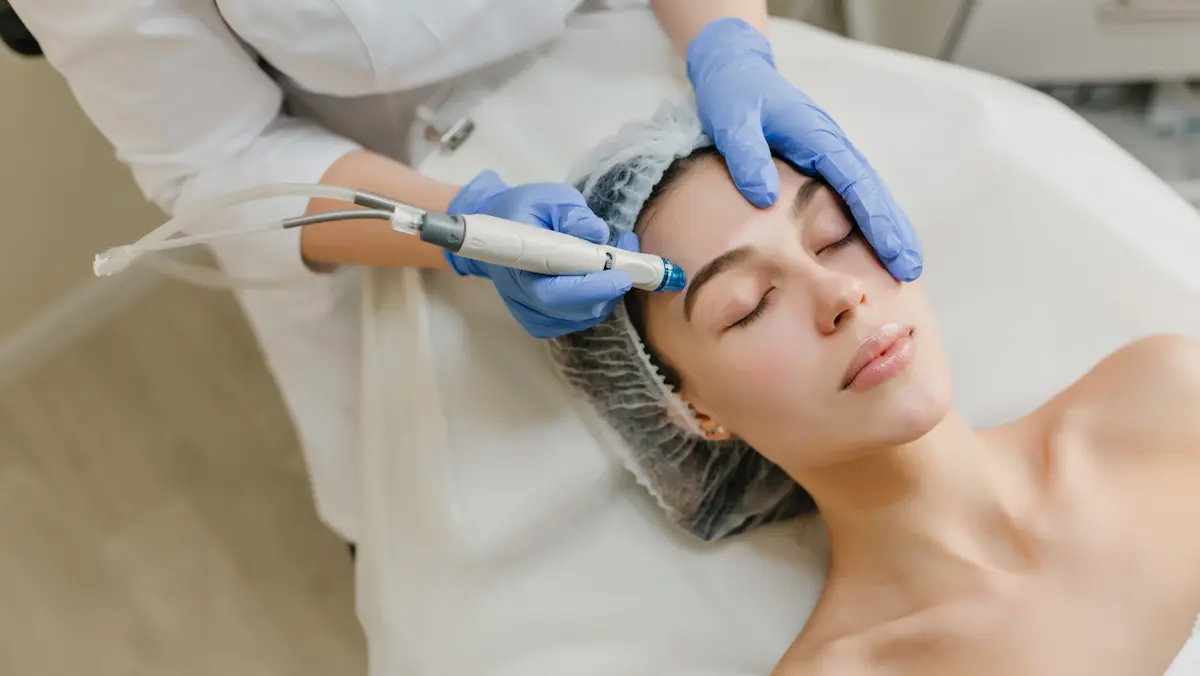
Facial rejuvenation procedures can involve different techniques, and the level of pain or discomfort experienced can vary depending on the specific procedure, individual pain tolerance, and the skill of the practitioner performing the procedure.
Non-invasive or minimally invasive facial rejuvenation procedures such as injectables (e.g., Botox, fillers) and non-ablative laser treatments typically involve minimal discomfort and require little to no downtime. Patients may experience some slight discomfort or temporary redness, swelling, or bruising in the treated area, but these effects usually subside within a few days.
More invasive procedures such as surgical facelifts or ablative laser resurfacing may involve some pain or discomfort during and after the procedure. However, the level of pain is usually well-managed with pain medication prescribed by the surgeon or practitioner. Patients may experience some bruising, swelling, and discomfort during the recovery period, which can last up to a few weeks.
It is important to discuss any concerns about pain or discomfort with your practitioner before undergoing any facial rejuvenation procedure. They can provide you with information about what to expect during and after the procedure, as well as options for pain management.
The duration of the results of facial rejuvenation procedures depends on the specific procedure performed and the individual’s skin condition, lifestyle factors, and aging process. Here are some general guidelines on the longevity of various facial rejuvenation procedures:
Non-invasive or minimally invasive procedures, such as injectables and non-ablative laser treatments, typically provide temporary results that can last for several months to a year. The exact duration can vary depending on the type of product used, the area treated, and the individual’s metabolism.
Surgical facelifts, brow lifts, or neck lifts can provide long-lasting results that can last for several years. However, the aging process will continue, and the results may gradually diminish over time.
Ablative laser resurfacing can provide long-lasting results by stimulating collagen production and improving skin texture and tone. However, the results can also depend on the individual’s skin condition, lifestyle factors, and sun exposure, and may gradually diminish over time.
Maintenance treatments, such as periodic injections of Botox or fillers, can help prolong the results of facial rejuvenation procedures and maintain a youthful appearance over time.
It’s important to note that individual results can vary, and factors such as sun exposure, smoking, and genetics can affect the longevity of the results. It’s also essential to follow a healthy lifestyle and skincare routine to help maintain the results of facial rejuvenation procedures.
Facial rejuvenation is a broad term that can refer to various surgical and non-surgical cosmetic procedures aimed at improving the appearance of the face. The recovery time for facial rejuvenation procedures can vary widely depending on the specific procedure performed and the individual’s healing abilities.
Non-surgical procedures such as injectables (e.g. Botox, dermal fillers) may require little to no recovery time, with most patients able to return to normal activities immediately after treatment. However, some bruising, swelling, and mild discomfort may occur, which can take a few days to a week to resolve.
Surgical procedures such as facelifts, brow lifts, and eyelid surgery generally require a longer recovery time. The initial recovery period can last one to two weeks, during which patients may experience swelling, bruising, and discomfort. It is common for patients to take time off work during this period to rest and allow their body to heal. Strenuous activities should be avoided for at least several weeks following surgery.
It’s important to follow the post-operative instructions provided by your surgeon, attend all follow-up appointments, and avoid activities that may interfere with the healing process. While most patients can return to their normal activities within a few weeks, it can take several months for the final results of the surgery to become visible as any residual swelling subsides.
It’s best to discuss your expected recovery time with your surgeon, as they can provide more specific guidance based on the type of procedure performed and your individual situation.
Facial rejuvenation encompasses a wide range of procedures aimed at improving the appearance and youthfulness of the face, including facelifts, dermal fillers, Botox injections, and laser treatments. When performed by qualified and experienced professionals, facial rejuvenation procedures can be safe. However, it is important to note that all surgical and non-surgical procedures carry some inherent risks and potential complications.
Qualified professionals: It is crucial to choose qualified and experienced professionals to perform facial rejuvenation procedures. This can include plastic surgeons, dermatologists, or aesthetic practitioners who have the necessary training and expertise in the specific procedure you are considering. Research their credentials, experience, and reviews from previous patients to ensure you are selecting a reputable provider.
Individual factors: Each person’s anatomy, medical history, and overall health can impact the safety and outcome of facial rejuvenation procedures. A thorough evaluation by the professional is necessary to assess your suitability for the procedure and identify any potential risks. Factors such as skin type, underlying facial structure, pre-existing medical conditions, and medications you may be taking will be taken into consideration.
Potential risks and complications: Like any medical procedure, facial rejuvenation procedures carry potential risks and complications. These can include bleeding, infection, scarring, adverse reactions to anesthesia or injected substances, asymmetry, bruising, swelling, changes in skin sensation, and dissatisfaction with the aesthetic outcome. It is important to have a detailed discussion with your provider about the potential risks associated with the specific procedure you are considering.
Recovery and healing: Facial rejuvenation procedures require a period of recovery and healing. Following the provider’s post-operative or post-treatment instructions, such as wound care, avoiding certain activities, and attending follow-up appointments, is crucial to promote healing and minimize the risk of complications. The recovery process can vary depending on the procedure performed and individual healing capabilities.
Communication and expectations: Open and clear communication with your provider is essential to ensure a safe and satisfactory outcome. During the consultation, discuss your goals, concerns, and expectations. Your provider can provide a realistic assessment of what can be achieved through the procedure, explain the potential limitations or risks, and help manage your expectations.
It is important to consult with a qualified professional who can evaluate your specific case, explain the procedure or treatment in detail, and address any questions or concerns you may have. They will guide you through the decision-making process, provide personalized recommendations, and help determine if facial rejuvenation is a safe and suitable option for you.
Scar revision can involve various techniques, including surgical excision, laser therapy, and dermabrasion. The amount of pain experienced during and after scar revision will depend on the specific technique used, the extent of the procedure, and an individual’s pain tolerance.
In general, scar revision procedures that involve incisions, such as surgical excision, may cause some pain during the procedure, and individuals may experience some discomfort in the days following the procedure. Your surgeon will typically provide pain relief medication and instructions on how to manage postoperative pain.
Scar revision techniques that are non-invasive, such as laser therapy or dermabrasion, may cause less pain during the procedure, but individuals may still experience some discomfort and sensitivity during the healing process.
Overall, scar revision procedures may cause some discomfort or pain, but your surgeon will work with you to manage your pain and ensure that you are as comfortable as possible during and after the procedure.
The longevity of scar revision results can vary depending on several factors, including the type and extent of the original scar, the technique used for revision, and how well an individual follows post-operative care instructions. In general, scar revision can produce long-lasting results, but it is important to note that scars may still develop over time, even after successful revision.
Some scar revision techniques, such as laser therapy or chemical peels, may require periodic touch-ups or additional treatments to maintain the results. Surgical scar revision, on the other hand, may produce more permanent results, but it is important to remember that scars will always be present, even if they are less noticeable after revision.
To maximize the longevity of scar revision results, it is essential to follow proper wound care and scar management techniques, including keeping the area clean and moisturized, avoiding sun exposure, and avoiding activities that may put tension or stress on the scar. Additionally, maintaining overall skin health through a healthy diet, exercise, and proper skincare can also help prevent the formation of new scars.
The recovery time for scar revision surgery can vary depending on the type and extent of the procedure, the size and location of the scar, as well as the individual’s overall health and healing ability.
Typically, after scar revision surgery, there will be some swelling, bruising, and discomfort around the surgical site. Dressings may be applied to the area, and a compression garment or bandage may be recommended to help minimize swelling and support the healing tissues.
The recovery time can range from a few days to a few weeks, with most people able to return to normal activities within a week or two. However, it is important to avoid strenuous activity or exercise for several weeks and to avoid exposing the area to direct sunlight or extreme temperatures during the healing process.
It is also important to follow your surgeon’s post-operative instructions carefully, including any medication, wound care, or follow-up appointments. This will help ensure a smooth recovery and optimal results from your scar revision surgery.
Scar revision is considered a safe procedure when performed by a qualified and experienced plastic surgeon or dermatologist. It is a surgical or non-surgical procedure aimed at minimizing the appearance of scars and improving their overall aesthetic.
Qualified professional: It is crucial to choose a qualified and experienced professional who specializes in scar revision. This can include plastic surgeons or dermatologists with expertise in scar treatment. Research their credentials, experience, and reviews from previous patients to ensure you are selecting a reputable provider.
Individual factors: Each person’s scar is unique, and numerous factors can influence the safety and effectiveness of scar revision. These factors may include the size, type, location, and characteristics of the scar, as well as your overall health and medical history. A thorough evaluation by the professional is necessary to assess your suitability for scar revision and identify any potential risks or limitations.
Potential risks and complications: While scar revision is safe, it is important to be aware of potential risks and complications. These can include bleeding, infection, poor wound healing, changes in skin sensation, asymmetry, recurrence of the scar, and dissatisfaction with the aesthetic outcome. Your provider will discuss these risks with you during the consultation and provide personalized recommendations based on your individual circumstances.
Treatment options: Scar revision can involve different techniques, including surgical excision, laser resurfacing, dermal fillers, or topical treatments. Each technique has its own benefits and potential risks. Your provider will recommend the most appropriate treatment option for your specific scar, considering factors such as scar type, location, and your desired outcome.
Recovery and healing: The recovery process after scar revision can vary depending on the specific technique used and the individual’s healing capabilities. Your provider will provide post-operative or post-treatment instructions, including wound care, activity restrictions, and follow-up appointments. Adhering to these instructions is important for proper healing and to minimize the risk of complications.
Communication and expectations: Open and clear communication with your provider is essential for a safe and satisfactory outcome. During the consultation, discuss your goals, concerns, and expectations. Your provider will assess the scar and provide a realistic assessment of what can be achieved through scar revision. They will also explain the potential limitations or risks associated with the procedure.
It is important to consult with a qualified professional who can evaluate your specific scar, explain the available treatment options, and address any questions or concerns you may have. They will guide you through the decision-making process and help determine if scar revision is a safe and suitable option for you.
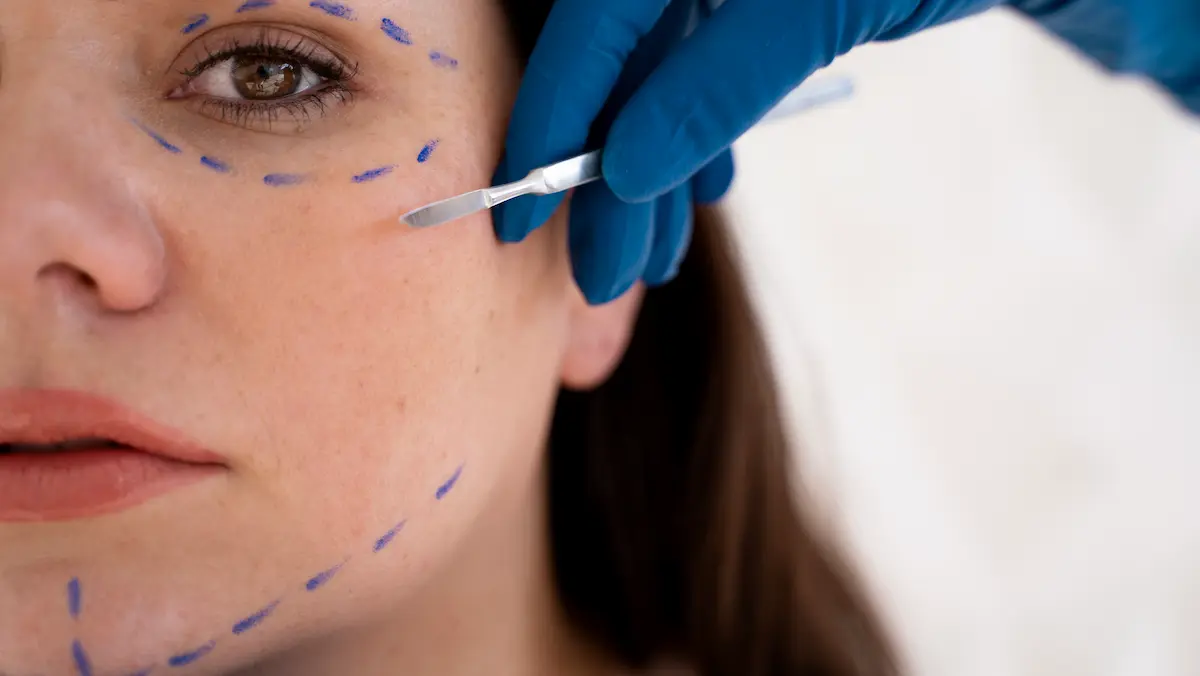

PRP (Platelet-Rich Plasma) and Mesotherapy procedures can be uncomfortable, but the level of pain varies depending on several factors such as individual pain tolerance, the specific technique used, and the area being treated.
During a PRP procedure, a small amount of blood is drawn from the patient and then processed to isolate the platelet-rich plasma, which is then injected back into the patient’s body. While the procedure may cause some discomfort or a pinching sensation at the injection site, most patients report that it is relatively painless.
Mesotherapy is a technique that involves injecting a mixture of vitamins, minerals, and other substances directly into the skin. Depending on the specific substances used, some patients may experience mild discomfort or a burning sensation during the procedure. However, a numbing cream or local anesthesia can be used to minimize discomfort.
Overall, while both PRP and Mesotherapy may cause some discomfort during the procedure, most patients find that the benefits of the treatment outweigh any temporary discomfort. It is always best to discuss any concerns about pain or discomfort with your healthcare provider before undergoing any medical procedure.
The duration of results from PRP (Platelet-Rich Plasma) and Mesotherapy treatments can vary depending on the specific treatment, the individual patient, and the area being treated.
For PRP, the duration of results can vary depending on the condition being treated. In general, the results can last anywhere from several months to a year or more. For example, PRP injections for hair loss may require multiple treatments over several months, with results lasting up to a year or more.
For Mesotherapy, the duration of results can also vary depending on the specific treatment and the area being treated. For example, Mesotherapy for skin rejuvenation may require several treatments over several months, with results lasting for several months to a year.
It is important to note that both PRP and Mesotherapy are typically used as part of a larger treatment plan and are often combined with other therapies or treatments to achieve optimal results. Your healthcare provider can provide more specific information about what to expect from PRP or Mesotherapy treatments and how long the results are likely to last in your individual case.
The recovery time for PRP (Platelet-Rich Plasma) or Mesotherapy can vary depending on the specific treatment and the individual’s healing ability.
In general, PRP treatments involve taking a small amount of the patient’s own blood, processing it to concentrate the platelets, and then injecting the platelet-rich plasma into the treatment area. Mesotherapy involves injecting small amounts of various substances into the skin to address specific concerns such as wrinkles, sagging, or acne.
After PRP or Mesotherapy, patients may experience some redness, swelling, or bruising around the injection sites. These side effects are usually mild and temporary and typically resolve within a few days.
Most people are able to resume their normal activities immediately after treatment, although some may prefer to take a day or two off work or social activities to allow any redness or swelling to subside. It is also important to avoid direct sun exposure, extreme temperatures, or strenuous exercise for a few days after treatment.
The full benefits of PRP or Mesotherapy treatments may take several weeks or months to become apparent as the skin’s natural healing and rejuvenation processes are activated. The specific recovery time can vary depending on the individual’s skin condition, the number and frequency of treatments, and the treatment goals. It is important to follow your healthcare provider’s post-treatment instructions carefully to ensure the best possible results.
PRP (Platelet-Rich Plasma) therapy and mesotherapy are considered safe procedures when performed by qualified and experienced medical professionals. However, as with any medical treatment, there are certain considerations and potential risks to be aware of.
Procedure: PRP therapy involves extracting a sample of your blood, processing it to concentrate the platelets, and then injecting the platelet-rich plasma back into the targeted area. The concentrated platelets contain growth factors that are believed to promote tissue healing and regeneration.
Safety: Since PRP therapy utilizes your own blood, the risk of allergic reactions or adverse immune reactions is minimal. However, as with any injection-based procedure, there can be a small risk of infection, bleeding, or bruising at the injection site.
Qualifications: It is important to ensure that the PRP therapy is performed by a qualified healthcare professional who has the necessary training and experience in this specific procedure. They should follow proper sterilization and injection techniques to minimize the risk of complications.
Procedure: Mesotherapy involves injecting a mixture of medications, vitamins, enzymes, and other substances into the middle layer of the skin to target specific concerns such as skin rejuvenation, fat reduction, or hair growth stimulation.
Safety: When performed correctly by a qualified professional, mesotherapy is safe. However, there is a risk of side effects such as pain, bruising, swelling, itching, and infection at the injection sites. Allergic reactions to the injected substances are possible but rare.
Qualifications: It is important to choose a qualified healthcare professional, such as a dermatologist or cosmetic surgeon, who has expertise in performing mesotherapy. They should have a thorough understanding of the injection techniques, appropriate dosage, and safety measures to minimize potential risks.
Research and choose a reputable clinic or practitioner with a record of successful procedures and positive patient testimonials.
Have a consultation with the healthcare professional to discuss your concerns, goals, and expectations, as well as any pre-existing medical conditions or allergies you may have.
Ask about the experience and qualifications of the professional who will be performing the procedure.
Follow all pre- and post-treatment instructions provided by your healthcare professional to minimize the risk of complications and optimize your results.
By taking these precautions and consulting with a qualified professional, you can increase the likelihood of a safe and successful PRP therapy or mesotherapy procedure.
The experience of receiving Botox or dermal fillers can vary from person to person, but many people report only minor discomfort during the procedure.
Botox injections involve a very fine needle, and most people describe the sensation as a tiny pinch or sting. The injection itself only takes a few seconds, and any discomfort typically resolves quickly.
Dermal fillers, which are used to add volume and smooth out wrinkles, can also cause some discomfort during injection. However, most practitioners will use a numbing cream or ice to minimize any pain or discomfort. Some types of dermal fillers also contain lidocaine, which is a local anesthetic that can help reduce pain during the procedure.
Overall, Botox and dermal fillers are considered to be minimally invasive procedures that are generally well-tolerated by most patients. However, everyone’s pain tolerance is different, so it’s important to communicate with your practitioner and let them know if you are experiencing any discomfort during the procedure.
The duration of results from Botox and dermal fillers can vary depending on several factors, including the type of product used, the location of the injection, and individual differences in metabolism and lifestyle factors.
Botox injections typically last between 3-6 months before the muscle movement gradually returns and wrinkles reappear. However, with repeated treatments, the effects of Botox can last longer due to the weakening of the muscles that cause wrinkles.
Dermal fillers can last anywhere from 6 months to 2 years, depending on the type of filler used, the location of the injection, and how quickly your body metabolizes the product. Some types of fillers, such as those made with hyaluronic acid, can be dissolved with an enzyme injection if desired.
It’s important to note that individual results can vary, and maintaining the effects of Botox or dermal fillers typically requires periodic maintenance treatments to ensure long-lasting results. It’s best to consult with a qualified practitioner to determine the best treatment plan and expected duration of results for your individual needs.
The recovery time for Botox and dermal fillers is typically minimal, and most people are able to resume their normal activities immediately after the procedure.
Botox injections work by relaxing the muscles that cause wrinkles and are commonly used to treat lines and wrinkles in the forehead, between the eyebrows, and around the eyes. Dermal fillers, on the other hand, are used to restore volume and smooth out wrinkles and lines on the face.
After Botox or dermal filler injections, patients may experience some mild swelling, redness, or bruising at the injection site. These side effects are usually temporary and will typically subside within a few days. Applying ice or a cold compress to the area immediately after the injection can help reduce swelling and discomfort.
It is important to avoid rubbing or massaging the treated area for several hours after the procedure to prevent the injected material from moving to unintended areas. It is also recommended to avoid strenuous exercise or activities for 24 hours after the procedure.
The full effects of Botox and dermal fillers can take several days to become noticeable and may last several months or longer, depending on the specific treatment and the individual’s metabolism. It is important to follow your healthcare provider’s post-treatment instructions carefully to ensure the best possible results and to avoid any complications.
Botox and dermal fillers are considered safe when administered by qualified and experienced professionals. However, as with any medical procedure, there are potential risks and side effects that should be taken into consideration.
Botox, which is derived from a toxin produced by the bacterium Clostridium botulinum, works by temporarily paralyzing muscles, thereby reducing the appearance of wrinkles. When administered by a trained healthcare provider in appropriate doses, the risk of serious complications is minimal. However, some potential side effects of Botox injections may include temporary bruising, swelling, headache, flu-like symptoms, and drooping of the eyelid or eyebrow. These side effects are usually mild and resolved within a few days or weeks.
Dermal fillers, on the other hand, are substances injected into the skin to restore volume, smooth wrinkles, and enhance facial contours. Common types of dermal fillers include hyaluronic acid-based fillers and collagen-stimulating fillers. Like Botox, when administered by a qualified professional, the risks associated with dermal fillers are low. However, side effects include temporary redness, swelling, bruising, lumps, and asymmetry. Rare but serious complications such as infection, tissue damage, or allergic reactions are also possible.
It is important to note that the safety of these procedures relies heavily on the skill and experience of the healthcare professional performing them. To minimize risks, it is crucial to choose a reputable and licensed provider who has appropriate training and experience in administering these treatments.
Before considering any cosmetic procedure, it is advisable to consult with a qualified healthcare professional who can evaluate your individual circumstances, discuss the potential risks and benefits, and help you make an informed decision based on your specific needs and goals.


Chemical peels can cause some discomfort, but the level of pain experienced can vary depending on the type of peel, the depth of the peel, and individual differences in pain tolerance.
Superficial or light chemical peels, which use mild acids such as alpha-hydroxy acid (AHA) or beta-hydroxy acid (BHA), typically cause only a mild stinging or tingling sensation during application, and any discomfort usually subsides quickly. These types of peels do not require any anesthesia or downtime and are often referred to as “lunchtime” peels because they can be done quickly during a lunch break.
Medium and deep chemical peels, which penetrate deeper into the skin using stronger acids such as trichloroacetic acid (TCA), can cause more significant discomfort during the procedure. These types of peels may require topical or local anesthesia to numb the skin before application. Patients may experience a burning or stinging sensation during the peel, which can be managed with cooling techniques and pain relief medication.
Overall, the discomfort experienced during a chemical peel is generally mild and short-lived, and most patients are able to resume normal activities immediately after the procedure. However, it’s important to communicate with your practitioner and let them know if you are experiencing any discomfort during the procedure so they can adjust the treatment as needed.
The duration of results from a chemical peel can vary depending on the type of peel, the depth of the peel, and individual factors such as skin type and lifestyle factors.
Superficial or light chemical peels, which use mild acids such as alpha-hydroxy acid (AHA) or beta-hydroxy acid (BHA), can produce immediate results that last for several weeks to months. These types of peels can help improve skin texture, tone, and radiance and can be repeated as needed to maintain the results.
Medium and deep chemical peels, which penetrate deeper into the skin using stronger acids such as trichloroacetic acid (TCA), can produce more dramatic results that can last for several months to years. These types of peels can help improve the appearance of fine lines, wrinkles, acne scars, and other skin imperfections.
It’s important to note that individual results can vary, and maintaining the effects of a chemical peel typically requires periodic maintenance treatments to ensure long-lasting results. It’s best to consult with a qualified practitioner to determine the best treatment plan and expected duration of results for your individual needs. Additionally, protecting the skin from the sun and practicing good skincare habits can help prolong the effects of a chemical peel.
The recovery time for chemical peels can vary depending on the type and strength of the peel, as well as the individual’s skin type and healing ability.
Chemical peels work by removing the outermost layer of skin to reveal smoother, fresher-looking skin beneath. The recovery time will depend on the depth of the peel and the strength of the chemicals used.
Superficial peels, which use mild acids such as alpha-hydroxy acid (AHA) or glycolic acid, typically have a very short recovery time, with some mild redness and peeling lasting only a few days. Medium-depth peels, which use stronger acids such as trichloroacetic acid (TCA), may cause redness, swelling, and peeling that lasts up to a week. Deep peels, which use phenol, are the most intense and may cause significant redness, peeling, and discomfort that can last several weeks.
After a chemical peel, it is important to keep the treated area clean and moisturized to help promote healing and prevent infection. Sun protection is also important during the healing process, as the skin will be more vulnerable to sun damage.
The specific recovery time for a chemical peel will depend on the individual’s skin type and the depth of the peel. It is important to follow your healthcare provider’s post-treatment instructions carefully to ensure the best possible results and to avoid any complications.
Chemical peels can be a safe and effective procedure when performed by a qualified professional. However, as with any medical procedure, there are potential risks and side effects that should be considered.
Chemical peels involve the application of a chemical solution to the skin, which causes the top layers of the skin to peel off, revealing smoother, more youthful-looking skin underneath. The strength of the chemical solution used in the peel will depend on the desired outcome and the specific needs of the individual.
When administered correctly and in appropriate concentrations, chemical peels are safe. However, some potential risks and side effects include redness, swelling, itching, and a burning sensation during the procedure. After the peel, the skin may be temporarily more sensitive to the sun and prone to sunburn, so it is crucial to take proper sun protection measures. In some cases, chemical peels can cause temporary changes in skin color, particularly in individuals with darker skin tones. Rare but more serious complications such as infection, scarring, or allergic reactions are also possible, although they are less common when the procedure is performed by a skilled professional.
To ensure the safety and effectiveness of a chemical peel, it is important to consult with a qualified dermatologist or healthcare professional who can assess your skin type, discuss your expectations, and determine the most appropriate type and strength of chemical peel for your individual needs. They will also provide pre- and post-treatment instructions to minimize the risk of complications and help you achieve optimal results.

Chemical peels can cause some discomfort, but the level of pain experienced can vary depending on the type of peel, the depth of the peel, and individual differences in pain tolerance.
Superficial or light chemical peels, which use mild acids such as alpha-hydroxy acid (AHA) or beta-hydroxy acid (BHA), typically cause only a mild stinging or tingling sensation during application, and any discomfort usually subsides quickly. These types of peels do not require any anesthesia or downtime and are often referred to as “lunchtime” peels because they can be done quickly during a lunch break.
Medium and deep chemical peels, which penetrate deeper into the skin using stronger acids such as trichloroacetic acid (TCA), can cause more significant discomfort during the procedure. These types of peels may require topical or local anesthesia to numb the skin before application. Patients may experience a burning or stinging sensation during the peel, which can be managed with cooling techniques and pain relief medication.
Overall, the discomfort experienced during a chemical peel is generally mild and short-lived, and most patients are able to resume normal activities immediately after the procedure. However, it’s important to communicate with your practitioner and let them know if you are experiencing any discomfort during the procedure so they can adjust the treatment as needed.
The duration of results from a chemical peel can vary depending on the type of peel, the depth of the peel, and individual factors such as skin type and lifestyle factors.
Superficial or light chemical peels, which use mild acids such as alpha-hydroxy acid (AHA) or beta-hydroxy acid (BHA), can produce immediate results that last for several weeks to months. These types of peels can help improve skin texture, tone, and radiance and can be repeated as needed to maintain the results.
Medium and deep chemical peels, which penetrate deeper into the skin using stronger acids such as trichloroacetic acid (TCA), can produce more dramatic results that can last for several months to years. These types of peels can help improve the appearance of fine lines, wrinkles, acne scars, and other skin imperfections.
It’s important to note that individual results can vary, and maintaining the effects of a chemical peel typically requires periodic maintenance treatments to ensure long-lasting results. It’s best to consult with a qualified practitioner to determine the best treatment plan and expected duration of results for your individual needs. Additionally, protecting the skin from the sun and practicing good skincare habits can help prolong the effects of a chemical peel.
The recovery time for chemical peels can vary depending on the type and strength of the peel, as well as the individual’s skin type and healing ability.
Chemical peels work by removing the outermost layer of skin to reveal smoother, fresher-looking skin beneath. The recovery time will depend on the depth of the peel and the strength of the chemicals used.
Superficial peels, which use mild acids such as alpha-hydroxy acid (AHA) or glycolic acid, typically have a very short recovery time, with some mild redness and peeling lasting only a few days. Medium-depth peels, which use stronger acids such as trichloroacetic acid (TCA), may cause redness, swelling, and peeling that lasts up to a week. Deep peels, which use phenol, are the most intense and may cause significant redness, peeling, and discomfort that can last several weeks.
After a chemical peel, it is important to keep the treated area clean and moisturized to help promote healing and prevent infection. Sun protection is also important during the healing process, as the skin will be more vulnerable to sun damage.
The specific recovery time for a chemical peel will depend on the individual’s skin type and the depth of the peel. It is important to follow your healthcare provider’s post-treatment instructions carefully to ensure the best possible results and to avoid any complications.
Chemical peels can be a safe and effective procedure when performed by a qualified professional. However, as with any medical procedure, there are potential risks and side effects that should be considered.
Chemical peels involve the application of a chemical solution to the skin, which causes the top layers of the skin to peel off, revealing smoother, more youthful-looking skin underneath. The strength of the chemical solution used in the peel will depend on the desired outcome and the specific needs of the individual.
When administered correctly and in appropriate concentrations, chemical peels are safe. However, some potential risks and side effects include redness, swelling, itching, and a burning sensation during the procedure. After the peel, the skin may be temporarily more sensitive to the sun and prone to sunburn, so it is crucial to take proper sun protection measures. In some cases, chemical peels can cause temporary changes in skin color, particularly in individuals with darker skin tones. Rare but more serious complications such as infection, scarring, or allergic reactions are also possible, although they are less common when the procedure is performed by a skilled professional.
To ensure the safety and effectiveness of a chemical peel, it is important to consult with a qualified dermatologist or healthcare professional who can assess your skin type, discuss your expectations, and determine the most appropriate type and strength of chemical peel for your individual needs. They will also provide pre- and post-treatment instructions to minimize the risk of complications and help you achieve optimal results.
HydraFacial is generally considered a comfortable and pain-free procedure. Most individuals find it to be a soothing and relaxing experience. Here are some reasons why HydraFacial is typically well-tolerated:
Gentle Suction and Exfoliation: The exfoliation and extraction steps of HydraFacial involve the use of a gentle suction tool that removes impurities from the pores. The suction is typically adjusted to a level that is comfortable for the individual, minimizing any discomfort during the procedure.
Non-Invasive Nature: HydraFacial is a non-invasive treatment that does not involve needles, incisions, or aggressive techniques. The procedures used during the treatment are generally gentle on the skin, reducing the likelihood of pain or discomfort.
Customizable Treatment: HydraFacial can be tailored to the individual’s specific skin concerns and sensitivities. Skincare professionals can adjust the intensity of the exfoliation, extraction, and infusion steps to ensure maximum comfort. They can also select serums that are suitable for sensitive skin or address specific concerns like redness or inflammation.
Cooling and Soothing Effects: The HydraFacial device and serums used in the treatment often have a cooling effect on the skin. This can help soothe any minor sensations that may arise during the procedure, providing a more comfortable experience.
While most individuals find HydraFacial to be painless, it’s important to note that everyone’s pain threshold and sensitivity can vary. Some individuals with extremely sensitive skin or specific skin conditions may experience mild discomfort or sensitivity during the treatment. If you have any concerns about pain or discomfort, it is recommended to communicate with your skincare professional before the procedure. They can take steps to ensure your comfort, such as adjusting the settings or using additional numbing agents if necessary.
Overall, HydraFacial is designed to be a gentle and enjoyable treatment, providing effective results without significant pain or discomfort.
The duration of results from a HydraFacial treatment can vary depending on several factors, including individual skin characteristics, skincare routine, lifestyle habits, and the number of treatments received. While the effects are not permanent, HydraFacial can provide noticeable improvements to the skin that can last for several weeks. Here are some general guidelines regarding the longevity of HydraFacial results:
Immediate Results: Many people experience an immediate improvement in their skin’s appearance immediately following a HydraFacial treatment. The skin often looks smoother, brighter, and more hydrated. These initial results can last for a few days to a week.
Short-Term Results: In the weeks following a HydraFacial treatment, the skin continues to benefit from the deep cleansing, exfoliation, and hydration provided by the procedure. This can lead to continued improvements in skin texture, tone, and overall radiance. Short-term results typically last for about 1-2 weeks after each treatment.
Cumulative Effects: HydraFacial treatments are most effective when done in a series, typically recommended as a course of treatments. Regular and consistent sessions, usually spaced 2-4 weeks apart, can provide cumulative effects and longer-lasting results. By undergoing a series of treatments, the skin can experience more significant and sustained improvements over time.
Maintenance Treatments: To maintain the results achieved with HydraFacial, it is often recommended to undergo periodic maintenance treatments. These can be scheduled every 4-6 weeks or as advised by your skincare professional. Maintenance treatments help to sustain the benefits obtained from the initial series of treatments and keep the skin in a healthy and refreshed state.
It’s important to note that individual experiences may vary, and the duration of results can depend on various factors, including genetics, skincare routine, sun exposure, and lifestyle habits. Additionally, the specific skin concerns being addressed will also impact the longevity of the results.
To maximize the duration of results, it is recommended to follow a proper skincare routine at home, including regular cleansing, moisturizing, and sun protection. It’s also advisable to maintain a healthy lifestyle by staying hydrated, eating a balanced diet, getting sufficient sleep, and minimizing factors that can negatively impact skin health, such as smoking and excessive sun exposure.
Consulting with a skincare professional or dermatologist is important to determine the optimal treatment plan and frequency of HydraFacial sessions for your specific skin concerns and goals. They can provide personalized recommendations based on your skin’s needs and guide you on how to maintain and prolong the results of HydraFacial treatments.
One of the advantages of HydraFacial is that it typically requires minimal to no downtime, allowing individuals to resume their regular activities immediately after the treatment. The recovery period is generally short and well-tolerated. Here is a general overview of the recovery timeline for HydraFacial:
Immediately after the treatment:
Within the first 24-48 hours:
Long-term effects and maintenance:
It’s important to note that individual experiences may vary, and some individuals may have more sensitive skin that requires additional time for recovery. If you have any specific concerns or experience prolonged redness or irritation after a HydraFacial, it’s best to consult with your skincare professional or dermatologist for personalized advice.
Following the post-treatment instructions provided by your skincare professional is crucial to optimize your recovery and maintain the benefits of HydraFacial. This may include using gentle skincare products, avoiding direct sun exposure, wearing sunscreen, and moisturizing regularly.
Remember to communicate any specific concerns or questions you have with your skincare professional to ensure you have a clear understanding of what to expect during your HydraFacial recovery process.
Yes, HydraFacial is considered a safe procedure when performed by a trained and qualified skincare professional. It is a non-invasive treatment that does not involve harsh chemicals or aggressive techniques, making it generally well-tolerated by most individuals.
Here are some factors that contribute to the safety of HydraFacial:
Non-Invasive Nature: HydraFacial is a non-invasive treatment, meaning it does not involve incisions, injections, or the use of lasers. The procedure utilizes gentle exfoliation, suction, and the application of serums to improve the skin’s health and appearance. This minimizes the risk of complications or adverse reactions.
Customization: HydraFacial can be customized to suit different skin types, concerns, and sensitivities. Skincare professionals can adjust the treatment parameters, including the strength of the exfoliation, the duration of each step, and the selection of serums used. This customization helps ensure that the treatment is tailored to the individual’s needs, reducing the likelihood of adverse effects.
FDA-Cleared Technology: The HydraFacial system has received clearance from the U.S. Food and Drug Administration (FDA). This means that the equipment used in the procedure has met certain safety and efficacy standards.
Minimal Downtime: HydraFacial requires no downtime. It allows individuals to get back to their regular activities immediately after the procedure. There is typically no need for recovery or post-procedure care, minimizing the risk of complications.
Professional Supervision: It is crucial to have HydraFacial performed by a trained and experienced skincare professional who understands the procedure and can evaluate your skin’s condition. They will ensure that the treatment is appropriate for your skin type and concerns and can provide guidance on post-treatment skincare.
However, it’s important to note that while HydraFacial is generally safe, there can be risks and potential side effects, albeit rare. These can include temporary redness, mild irritation, or sensitivity following the treatment. In some cases, individuals with certain skin conditions or sensitivities may experience more pronounced reactions. It’s essential to disclose any known allergies, skin conditions, or previous adverse reactions to skincare treatments to your skincare professional before undergoing HydraFacial.
To ensure the safest and most effective treatment, it is advisable to consult with a qualified skincare professional or dermatologist who can assess your specific situation and provide personalized recommendations. They will have the expertise to determine if HydraFacial is suitable for you and can guide you through the procedure with your safety in mind.
